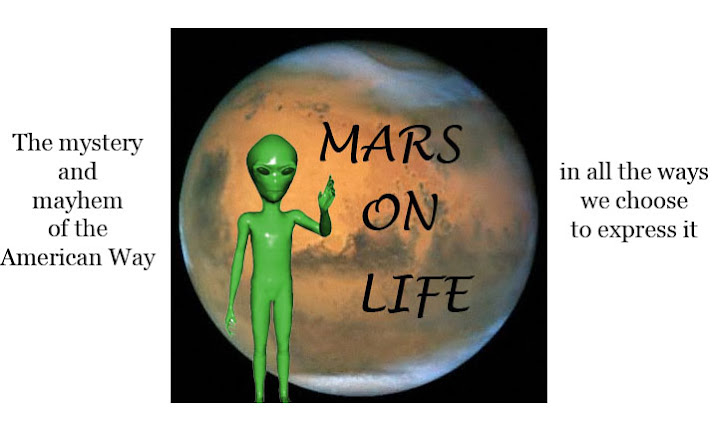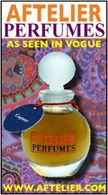
When your eleven-year-old niece tells you that Victoria's Secret is for "babies," you know there's trouble in the heartland. We were shopping in one of those giant suburban malls that makes a sweeping statement about retail homogeneity. Wherever you go, there you are, be it California or Connecticut. Our vestigial need for instantly recognizable cultural landmarks is at its apex in the mall, where both fast food and faddish shops flash beacons so that we may signal back with our wallets. This is our security blanket, and it has become every bit a part of our fiber as a Norman Rockwell painting. We are never more than a few miles from a Big Mac or a Miracle Bra. Nor do we want to be.
If we are only able to navigate without individualism and are constitutionally unable to operate outside the herd, consider the latest in insidious retail persuasion: Victoria's Secret has quietly done a partial rebrand aimed at your prepubescent child. Yes, your eight-year-old-daughter can now carry forth the "pink" message. Unlike the viral promise of the annual Fantasy Bra and the major network lingerie show, Victoria's Secret is relying on word-of-mouth advertising to spread its new dogma around playgrounds everywhere.
Grab 'em young, that's how the saying goes, and they'll be customers for life. As a lifestyle retailer, Victoria's Secret has a formidable cultural valence.
This is being done without irony.
I hadn't been in a Victoria's Secret in some time, but not enough time had elapsed that I didn't recognize that a significant amount of repackaging had been done. While the former packaging had been neutral and fairly age-indistinct, the new had Victoria's Secret taking demographic focus from Limited Brands family member Bath and Body Works, and Bath and Body Works' pre-teen consumer. Now, the beauty area fairly screamed Disney. Plush pink animals, sparkle lotions, glitter gels...it was a stable for My Little Pony. One had the feeling that if they could have worked in puppies, unicorns, and candy necklaces they would have.
The clothing section was worse. The entire center of the store had been given over to clothing in sizes for elementary school girls. My average-sized niece was too large (and intellectual) for this merchandise, hence her comment. She knew what I did not. "PINK" logos adorned jackets, schoolbags, and tiny, tiny panties. The new girl next door is six years old.
"Those are for Asians," the teenage salesgirl responded to my inquiry.
This was what she had apparently been told to say, because the other line of inquiry was more cunning. And yet the argument failed on two levels: Americans may be overgrown, jolly white giants, but the "Asians" of the reply are simply not as small as the merchandise was. Moreover, a certain Japanese fashion subculture aside, the clothes bore marked similarities to merchandise found at Gymboree and were not exactly what your typical small-framed adult woman would wear.
The message of female empowerment embedded in the PINK imprimatur was now empowering female children, and a sly slogan it was. Female empowerment sallies onward, but Victoria's Secret does it with sexuality, capturing the attention of children still playing with another, albeit sterile, symbol of female empowerment, Barbie. Thanks to the original conception, the message is a mixed one, as is the ultimate behavioral goal. Victoria's Secret has never been simply product-oriented.
You could see that healthy and patriotic consumerism was at the root of this corporate decision. Bath and Body Works has been quietly rebranded away from its near-exclusive pre-teen market, and Victoria's Secret has been designated the heiress apparent. Recently, VS separated itself from adult cosmetic lines that were in direct competition with Sephora and placed a firm emphasis on their own glittery, cotton-candy products. Since the shift at Bath and Body Works predated that of Victoria's Secret, a good deal of corporate observation occurred before making the decision to re-route that rich preteen vein into the more "sophisticated" of the two markets, the one that was not competitive with Sephora. In other words, Limited Brands put Bath and Body Works head-to-head with the powerful LVMH Sephora brand, and when this occurred they moved the kiddie corral across the mall.
Obviously, the young consumer would not be able to discern the greater message, which is the same one that says Playboy and The Girls Next Door are a wholesome celebration of All-American female sexuality in its purest, non-pornographic form. The original Victoria's Secret apriorism of flirtatious, winsome sexuality now carries just as substantive a message on the playground as it does in the bedroom.
It's almost 2008. Sex sells, long live Lolita, and we've got our knickers in a twist.
Friday, November 30, 2007
Do the Boob
Labels:
Victoria's Secret
Subscribe to:
Post Comments (Atom)









2 comments:
This profit based movement that rips the innocence from our children and tries to make them mini Baby Jane's leaves a foul taste in this mommy's mouth. Titillating kiddie panties masquerading as female empowerment just rub my pocketbook the wrong way. Call me old fashioned but self esteem and individualism are what makes a strong young woman in my book, not prepubescent cock worship taught at the retail level.
Miss Spinster, thanks for your plainspoken comment. "Pink" sounds like a winking codeword for "virginal" to my ears and it makes me quite uneasy.
Old-fashioned isn't necessarily OUT of fashion.
Post a Comment